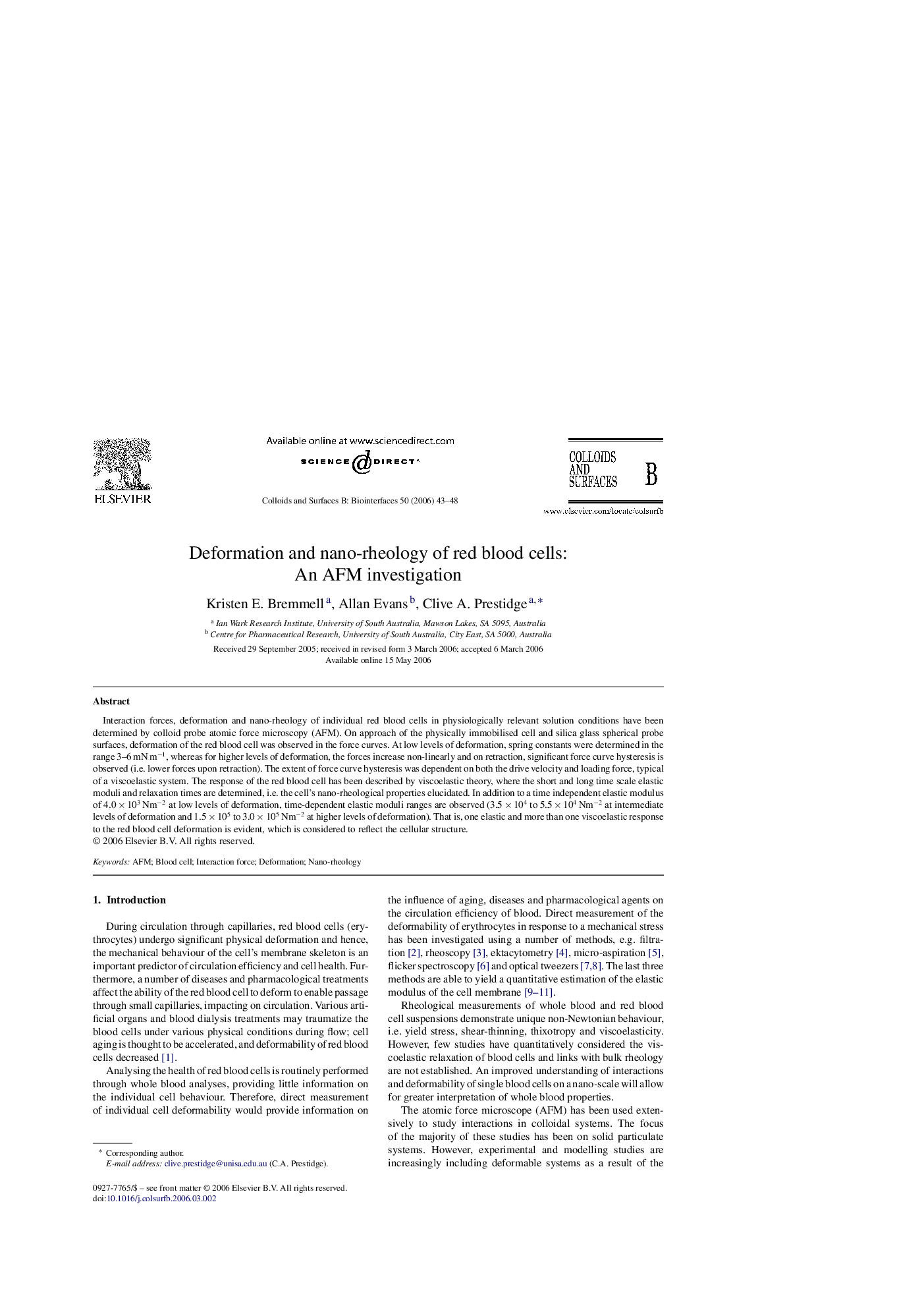| Article ID | Journal | Published Year | Pages | File Type |
|---|---|---|---|---|
| 602870 | Colloids and Surfaces B: Biointerfaces | 2006 | 6 Pages |
Interaction forces, deformation and nano-rheology of individual red blood cells in physiologically relevant solution conditions have been determined by colloid probe atomic force microscopy (AFM). On approach of the physically immobilised cell and silica glass spherical probe surfaces, deformation of the red blood cell was observed in the force curves. At low levels of deformation, spring constants were determined in the range 3–6 mN m−1, whereas for higher levels of deformation, the forces increase non-linearly and on retraction, significant force curve hysteresis is observed (i.e. lower forces upon retraction). The extent of force curve hysteresis was dependent on both the drive velocity and loading force, typical of a viscoelastic system. The response of the red blood cell has been described by viscoelastic theory, where the short and long time scale elastic moduli and relaxation times are determined, i.e. the cell's nano-rheological properties elucidated. In addition to a time independent elastic modulus of 4.0 × 103 Nm−2 at low levels of deformation, time-dependent elastic moduli ranges are observed (3.5 × 104 to 5.5 × 104 Nm−2 at intermediate levels of deformation and 1.5 × 105 to 3.0 × 105 Nm−2 at higher levels of deformation). That is, one elastic and more than one viscoelastic response to the red blood cell deformation is evident, which is considered to reflect the cellular structure.
